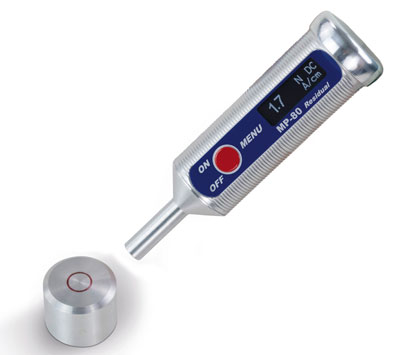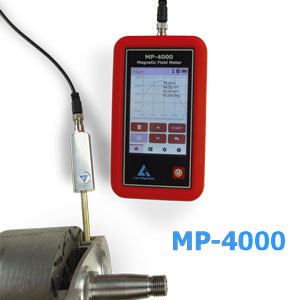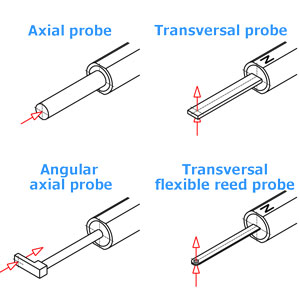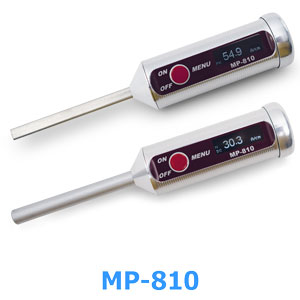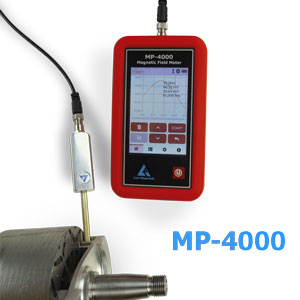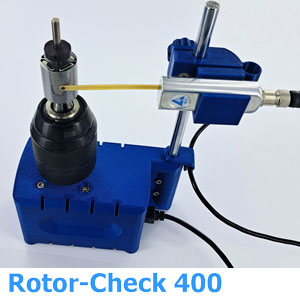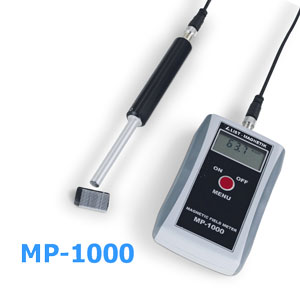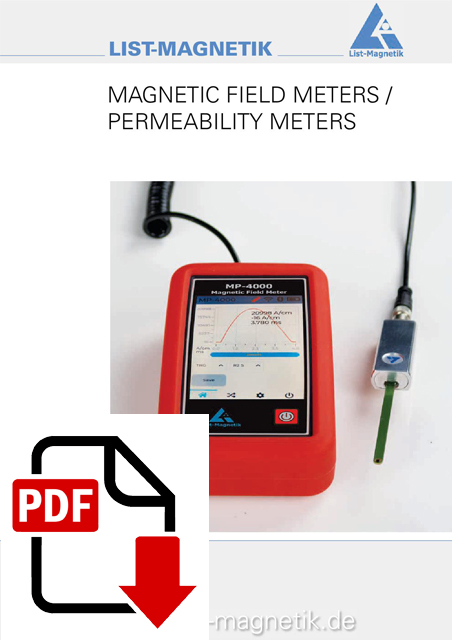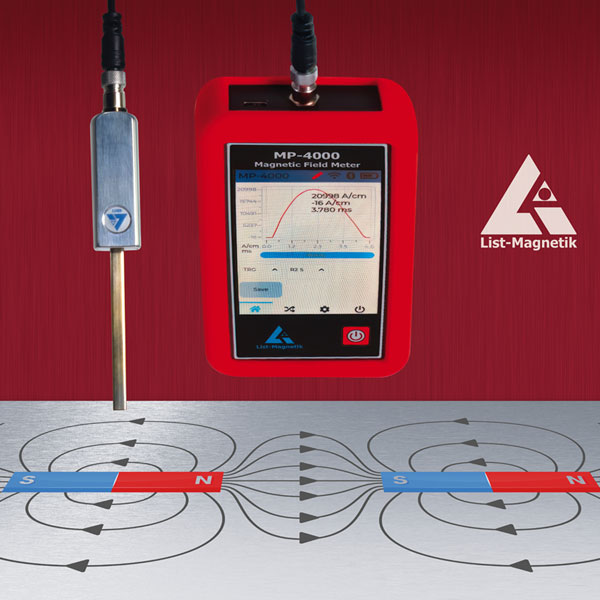List-Magnetik Magnetic field meters / Gaussmeters
How strong is a magnetic field? - Measuring magnetic field strength
This question is asked to determine the peak value of a magnet or the amount of residual magnetism it has. Devices that perform this task are called magnetometers, magnetic field meters, teslameters, or gaussmeters.

The measured value depends on the measurement position and the probe design
Here, we consider a DC field without polarity reversal. Analysis of the magnetic field lines shows that they run from the north pole to the south pole. For example, the poles of a bar magnet are typically located at its two ends. This is where the field is strongest. However, the field lines run differently depending on the magnet's shape. In a horseshoe magnet, for instance, the lines run parallel within the arc. The closer to a pole the magnetic field strength is measured, the stronger it is.
The probe's Hall sensor registers the Lorentz force, which is used to calculate the field strength. The closer the Hall sensor is to the pole, the greater the force. Different probe designs (e.g., axial or transverse) have different Hall sensor arrangements and lead to different measured values.
You have to figure this out during the measurement. Where are the poles? In which direction does the probe measure the most? Does turning or swiveling the probe cause a change? This allows you to examine each magnet for its maximum magnetic field intensity.
Magnetic field measurement, remanence measurement - what do you need?
What units are used to measure magnetism? Depending on the device, gauss (Gs) or milli-tesla (mT) may be displayed in addition to the standard unit of measurement, amperes per centimeter (A/cm). It is important to know the maximum magnetic field intensity to be expected. List-Magnetik has a selection of magnetic field meters and probes for every purpose, including single-handed devices, separate probes, and laboratory devices.
The MP-810, MP-1000, and MP-4000 magnetic field meters can be used here. The MP-80, however, is particularly well-suited for magnetic measurements, such as remanence.

What is the difference between axial and transversal probes?
Axial probes measure along the same axis as the probe piston. Transverse probes, on the other hand, measure at a 90° angle to the probe. Transverse probes are better suited for measuring cavities or narrow pipes. In summary, the transverse probe is the more universal tool. This is because practically all axial probe measurements can be carried out transversely. One advantage of List-Magnetik's axial probe is the 2 mm distance between the Hall sensor and the probe cap. In industrial magnetic field measurements, such as in ball bearing production, this distance has become the de facto standard.

Pulse measurement and peak value
In order to measure a magnetic pulse, its peak value must be recorded. Short pulses are too fast to read on the display. However, with a peak value display and a graphical progression curve, pulses can be analyzed over time.

Rotor analysis
The changes in the poles of a rotor form a waveform with alternating north and south poles. Whether a rotor is correctly and evenly polarized can be determined by rotating it evenly over a measurement period. The graphical progression curve also helps detect irregularities here.

Calibration Standard / Reference Magnet - An important accessory for the magnetic field meter or gaussmeter
A calibration standard is a reference magnet that always displays the same value when the probe is in the same position. This allows the probe's correct function to be reliably checked.

The device, probe, and standard form a calibrated and certified unit. Using a probe on a calibration standard that was calibrated with a different probe can result in minimal deviation of the reference value. This is because probes cannot be manufactured identically. However, this deviation remains consistent.
Data Transfer from Magnetic Field Meter / Gaussmeter to PC or Application
Do you need to document or archive your measurement series? Would you like to detect extreme values and perform statistical analyses? If so, the MP-4000, which allows you to transfer data to Windows PCs, Android apps, and iOS apps, is the right tool for you.

The MP-810A/-810T and MP-80 also offer communication with Android, iOS and Windows.
The apps allow further processing of measurement series in Office applications. Integration with CAQ systems is also possible.







